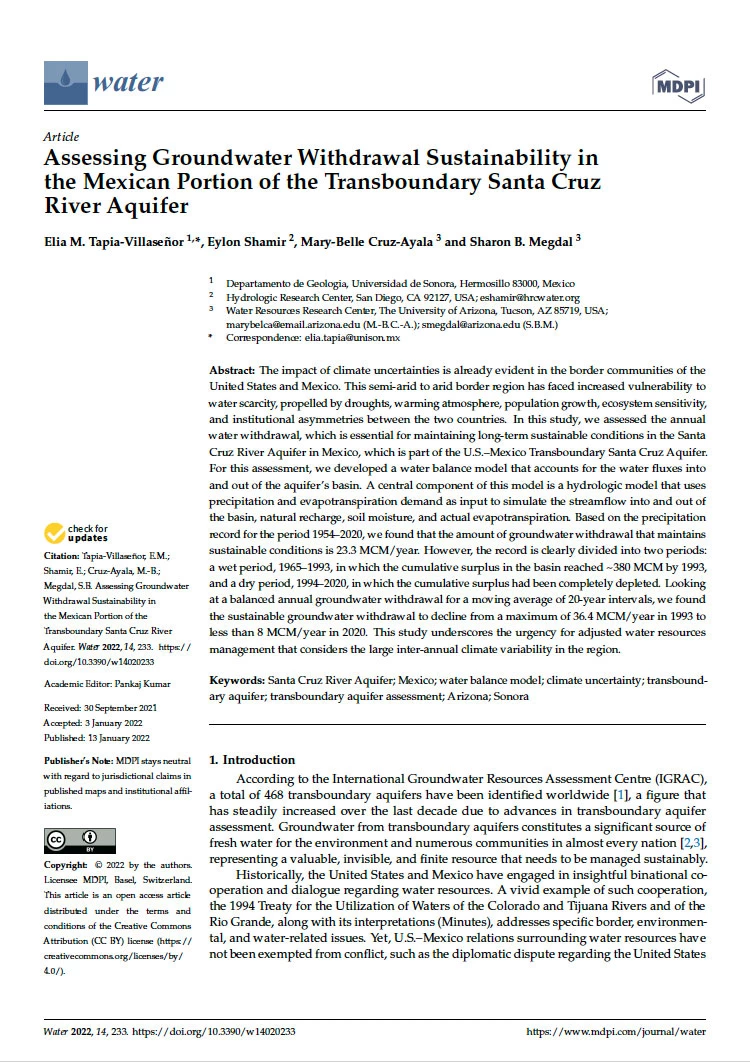
The impact of climate uncertainties is already evident in the border communities of the United States and Mexico. This semi-arid to arid border region has faced increased vulnerability to water scarcity, propelled by droughts, warming atmosphere, population growth, ecosystem sensitivity, and institutional asymmetries between the two countries. In this study, we assessed the annual water withdrawal, which is essential for maintaining long-term sustainable conditions in the Santa Cruz River Aquifer in Mexico, which is part of the U.S.–Mexico Transboundary Santa Cruz Aquifer. For this assessment, we developed a water balance model that accounts for the water fluxes into and out of the aquifer’s basin. A central component of this model is a hydrologic model that uses precipitation and evapotranspiration demand as input to simulate the streamflow into and out of the basin, natural recharge, soil moisture, and actual evapotranspiration. Based on the precipitation record for the period 1954–2020, we found that the amount of groundwater withdrawal that maintains sustainable conditions is 23.3 MCM/year. However, the record is clearly divided into two periods: a wet period, 1965–1993, in which the cumulative surplus in the basin reached ~380 MCM by 1993, and a dry period, 1994–2020, in which the cumulative surplus had been completely depleted. Looking at a balanced annual groundwater withdrawal for a moving average of 20-year intervals, we found the sustainable groundwater withdrawal to decline from a maximum of 36.4 MCM/year in 1993 to less than 8 MCM/year in 2020. This study underscores the urgency for adjusted water resources management that considers the large inter-annual climate variability in the region.

